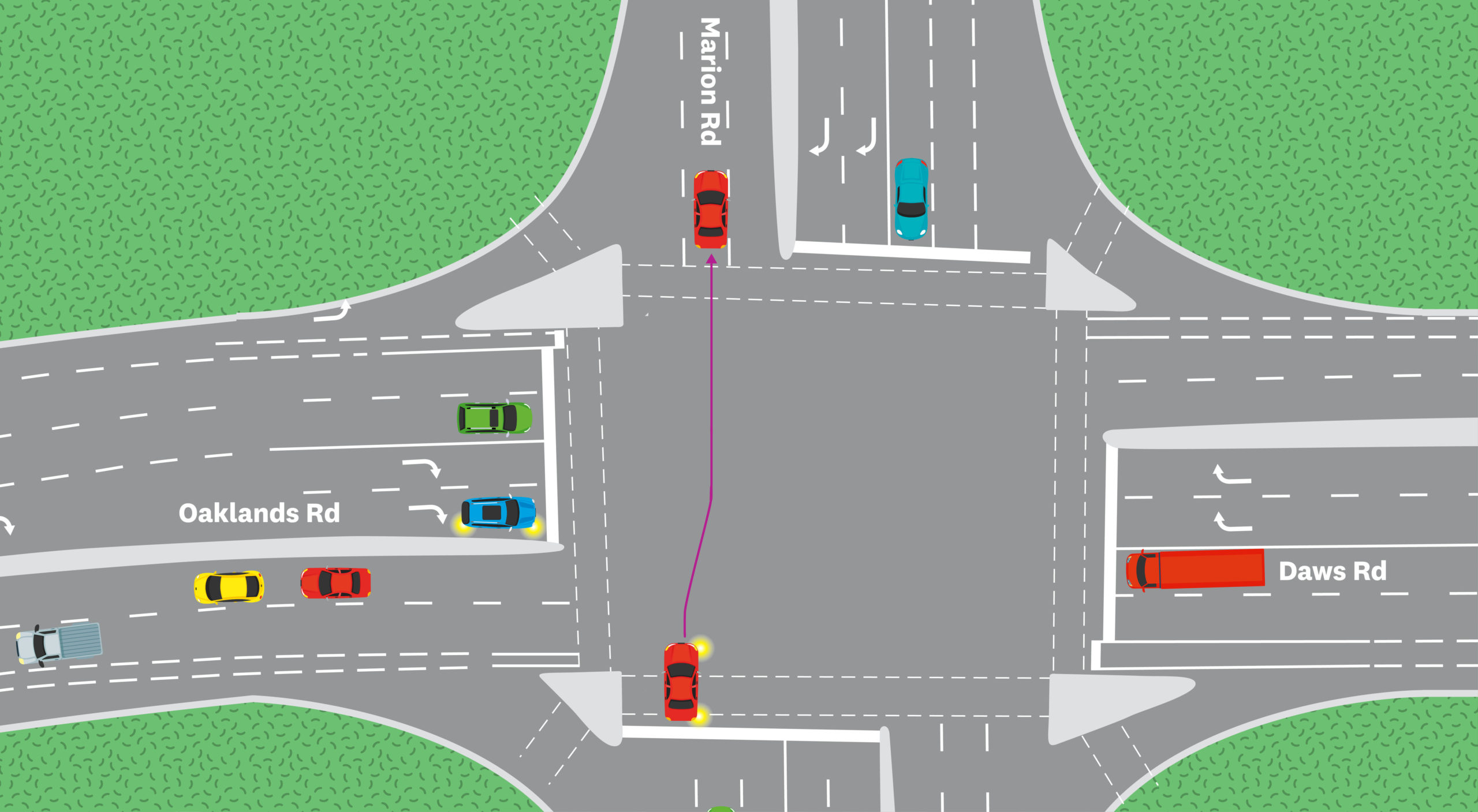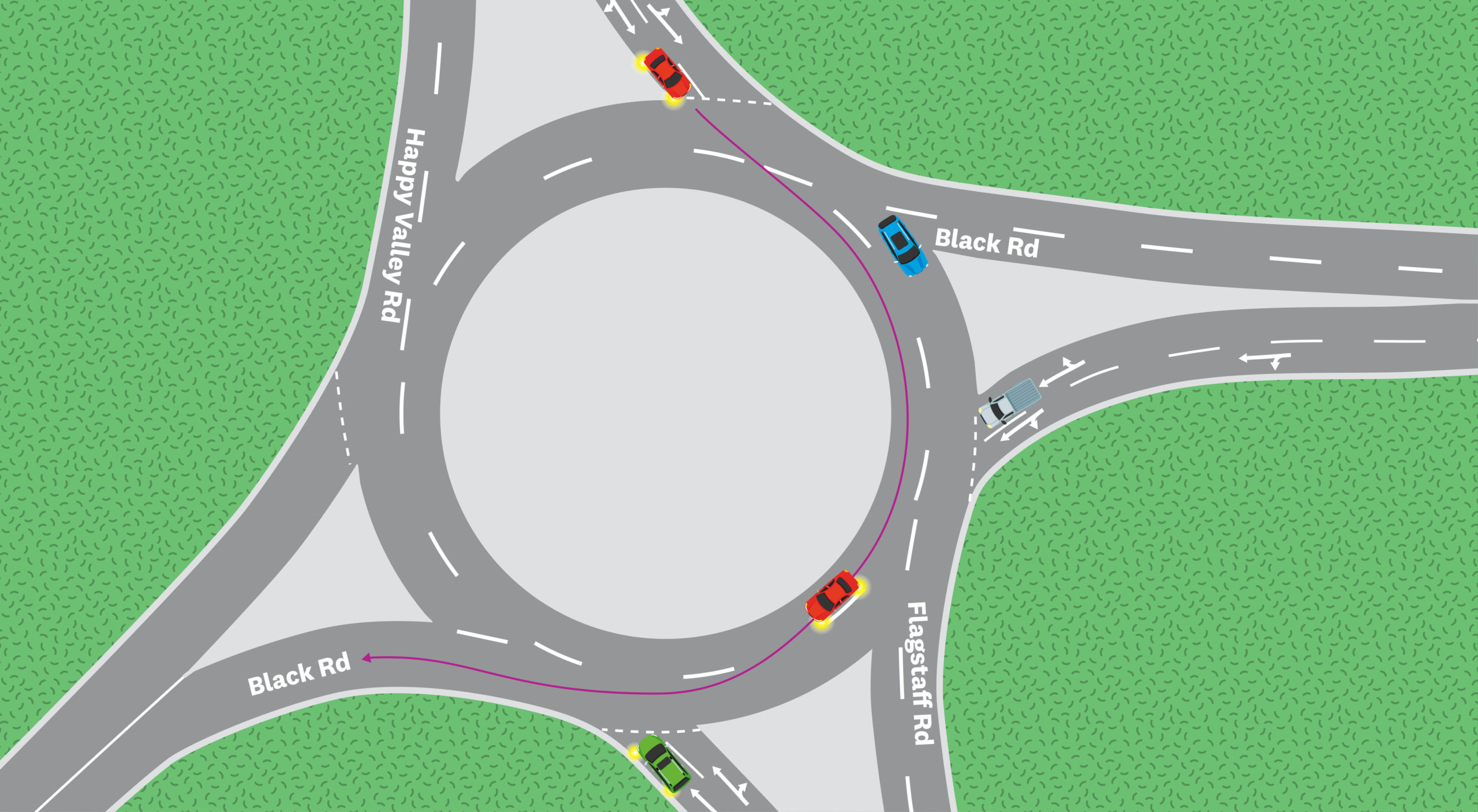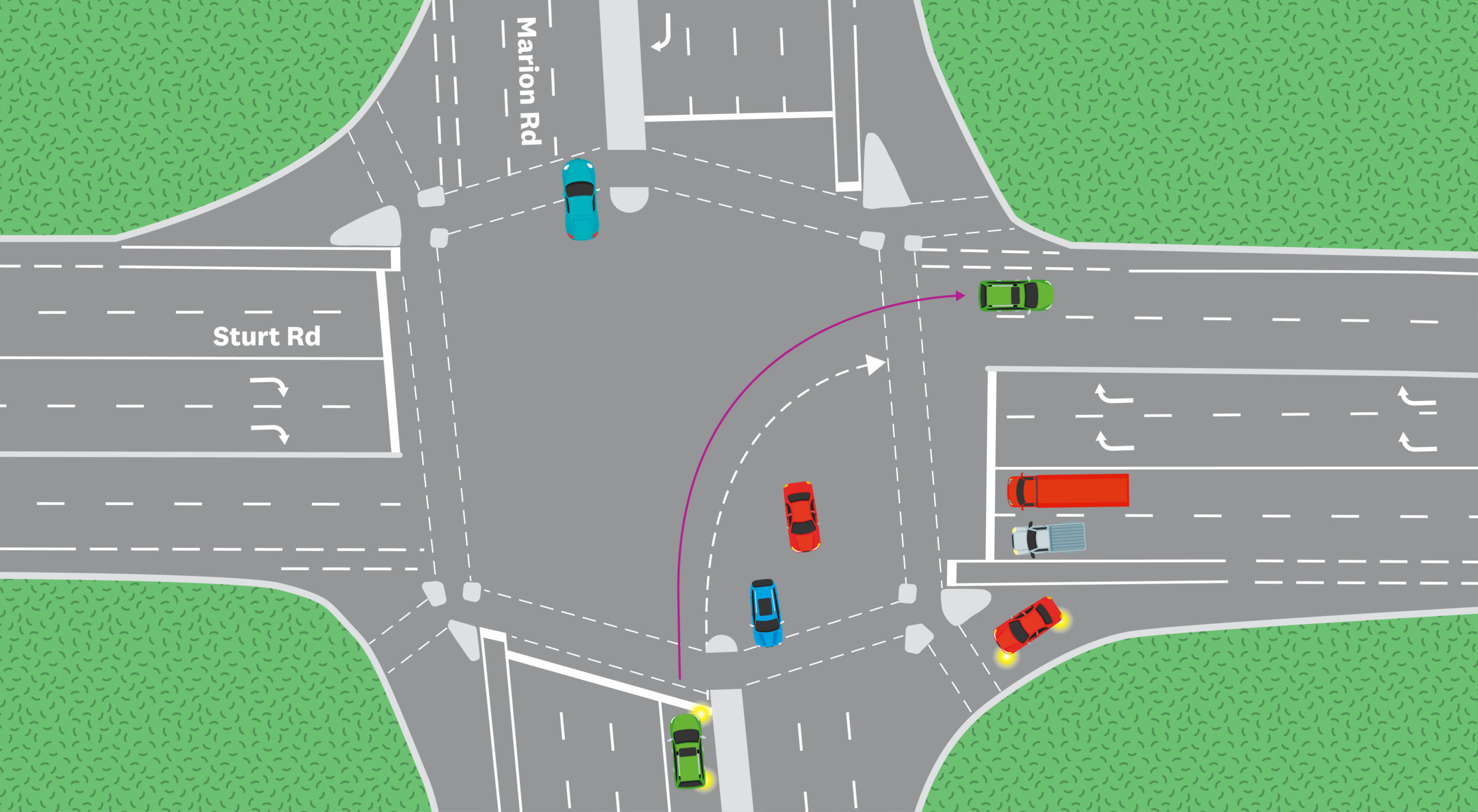Is it illegal to change lanes in an intersection or roundabout?

Changing lanes can be a risky manoeuvre if some basic steps are not followed. You need to look for a gap in traffic using your mirrors, indicate and check your blind spot – and that’s before you switch lanes.
Then on top of that, there has been some confusion surrounding whether you can legally change lanes in these three common scenarios. Don’t worry, though; we’re here to clear all that up.
Strap yourself in, check your mirrors and your blind spots and prepare for a lesson in changing lanes.
1. Changing lanes in an intersection

Have you ever wanted to make a last-minute lane change and wondered whether you can do it in an intersection?
It might come as a surprise, but there’s no law stating that changing lanes through an intersection is illegal, however just because you can, doesn’t mean you should. It’s potentially safer to change lanes either before or after passing through the intersection.
RAA Senior Manager of Safety and Infrastructure Charles Mountain says that despite it being legal, last-minute lane changes through intersections should be avoided.
“Changing lanes through an intersection can be confusing for other drivers particularly for those waiting to turn,” Mr Mountain said.
Motorists need to remember that the same rules apply when changing lanes through an intersection as they do with other lane changes.
“A driver must give sufficient warning of their intention to change lanes by using their indicators.”
If you’re caught changing lanes without indicating or giving sufficient warning, you could receive a $345 fine, plus a $92 Victims of Crime Levy and two demerit points.
When changing lanes, make sure you give way to traffic in the lane you want to enter. Failure to give way could result in a $363 fine, $92 Victims of Crime Levy and three demerit points.
2. Changing lanes while negotiating a roundabout
Just the thought of negotiating roundabouts, like those found at Britannia and Blackwood, is enough to give some people the sweats. Many drivers even plan their route to avoid those two daunting intersections.
On top of that, imagine having to change lanes – it’s probably enough to send some drivers around the twist. However it’s not illegal to switch lanes while driving around a roundabout, and sometimes necessary. In the example below, motorists wanting travelling from Flagstaff Rd to Black Rd in Flagstaff Hill need to change from the middle lane to the outside lane before exiting the roundabout.
The same rules apply when switching lanes on a roundabout as they do with other lane changes. You need to indicate your intentions and give way to traffic already in the lane.
In the scenario below, drivers need to indicate that they’re changing lanes early enough that motorists entering the roundabout from other approaches are aware of their movements.

However, it’s important to remember that according to the Australian Road Rules, a driver entering a roundabout from a multi-lane road must exit the roundabout in accordance with any marked arrows in the lane they enter from.
This usually means you can only turn left or continue straight from the left lane; or continue straight, turn right, or conduct a U-turn from the right lane, unless the marked arrows indicate otherwise.
Break this law and you could face a $396 fine, $92 Victims of Crime Levy and three demerit points.
3. Driving into the left lane of a multi-lane road when making a right-hand turn at traffic lights
It’s a common misconception that when turning right at traffic lights, you must drive into the right lane of a multi-lane road. In fact, you can legally enter either the right or left lane at some intersections.
There are some instances when you’re required to turn into a specific lane. If there are two or more lanes of traffic turning right, then you usually can’t change lanes while turning.
Instead, you must follow the turn lines, wait until you’ve made the turn and then follow the usual procedure to change lanes.


